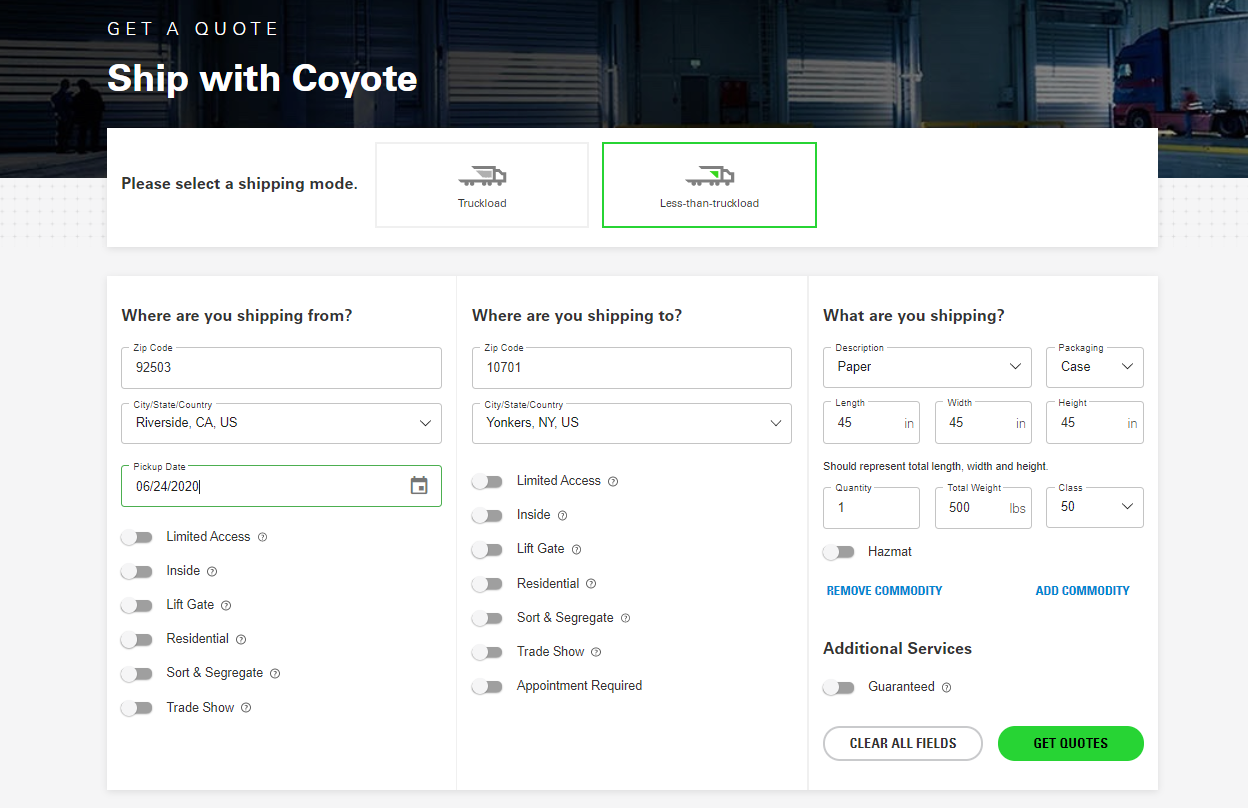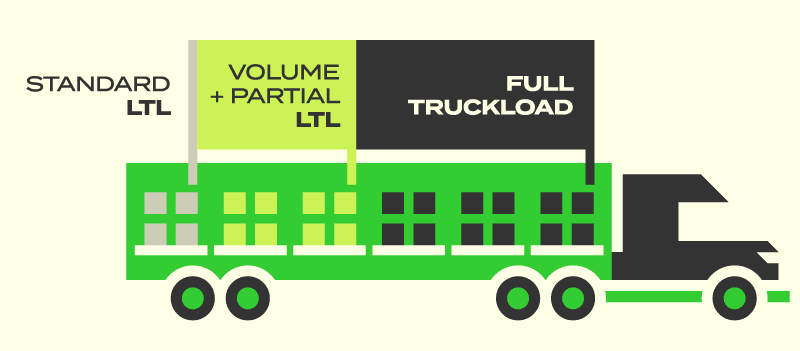Balancing Freight Cost & Service: 7 Ways to Get More Value With Your Transportation Spend

Every shipper understands the value of a high level of service throughout their supply chain — it protects your customer relationships and can even be a competitive advantage.
But even though service is critical, supply chain professionals typically face intense pressure to reduce freight costs from other stakeholders and company leadership.
According to our survey of nearly 1,000 shippers, the two most important KPIs they track are on-time delivery and cost per shipment — more than 85% of shippers agreed that both of these are at least somewhat important to their businesses.
But how do you get the best of both worlds? How do you maintain reliable service while keeping your transportation budget in check?
By focusing on logistics providers that offer high value for the cost.
Read on to learn seven ways you can go beyond the rate per shipment and choose a provider who stands out across the full scope of the relationship.
7 Ways to Balance Freight Cost & Service
- Prioritize network density.
- Use your provider’s free technology.
- Lean on your provider’s expertise.
- Convert modes for cost savings.
- Look for one-stop-shop providers.
- Reduce volatility with contract rates.
- Use market insights to improve your strategy.
1. Prioritize network density to get the right carrier at the right cost.
Transportation is in large part a numbers game — the more carriers your 3PL has in their network, the more likely they will be able to find one that matches your needs perfectly.
This is true whether you’re shipping in a high-traffic lane with lots of carrier competition or a less popular lane where capacity is more scarce.
The U.S. truckload market is enormous and fragmented, containing more than 900,000 for-hire motor carriers nationwide. That’s why the best providers maintain tens to hundreds of thousands of connections across this market, centralizing access to this enormous pool of capacity.
When you ship with a larger 3PL, their purchasing power can help them negotiate rates more favorable than those you’d get if you go it alone. And if you can reduce or eliminate deadhead miles by working with a provider who can find a backhaul for the carrier who moves your freight, you’ll almost always reduce your costs.
2. Take advantage of free technology from your provider to save time.
When running your transportation network, time is money.
Freight quoting and shipment management have to be fast, easy, done and on your terms.
Prioritize providers who want to help you automate the shipping process with free, easy-to-use software like our CoyoteGO® digital freight platform, which gives you the power to instantly quote, book, build and track your shipments through a convenient online portal.
What You Get with CoyoteGO:
- Unlimited instant freight quotes
- On-demand load building & booking
- Real-time tracking & visibility
- Automated settlement
- Digital credit application
- Accessible in desktop or mobile
Related: Learn more about CoyoteGO®
If you already have a transportation management system (TMS) and you don’t have time to jump into every providers’ platform for quotes and updates, many providers will offer EDI or API integration with your platform. This can provide you with hundreds (or even thousands) of instant truckload and LTL quotes, automated shipment building, real-time freight tracking and more.
3. Lean on your provider’s expertise for long-term savings.
Though digital solutions create cost-cutting efficiencies, you need the guidance of freight experts to drive long-term savings.
Dedicated logistics specialists can deliver high value for your freight spend, helping you to implement shipping best practices, determine the right solution for each shipment, and quote opportunities that meet your needs and budget.
Many providers also offer more comprehensive outsourced supply chain solutions to help you increase efficiency and control freight costs. The supply chain consulting teams that manage these solutions can help you:
- Run your requests for proposals (RFPs).
- Secure committed, dedicated pricing.
- Implement shipper of choice strategies.
- Optimize your network.
- Reduce spot market exposure.
- Become more efficient with continuous improvement programs.
4. Convert modes to cut shipping costs.
Providers who maintain truly diverse solutions portfolios can get you more access to affordable capacity with the opportunity for modal conversions.
Experienced logistics specialists can help you reduce your freight costs by identifying conversion opportunities in your network, whether you’re moving long-haul truckload freight to the rail, consolidating LTL freight, or moving partial truckload.
Consider converting truckload freight to the following alternative modes:
Related: learn from freight experts as they discuss the differences between truckload, LTL and intermodal shipping.
5. Spend less time (and resources) managing logistics providers.
Choosing the right mode is one way to optimize your freight spend — working with a multi-modal logistics provider is another, saving you money by reducing the internal resources you need to commit to carrier management.
Modes
- Truckload, LTL, intermodal
Equipment Types & Services
- Dry van, refrigerated, flatbed & open deck
- Hazmat, expedited, drop trailer, heavy haul & over-dimensional
Solutions
- Managed transportation, transportation management system (TMS), RFP management, dedicated surge capacity, power only, trailer leasing, private fleet programs
Your team’s time is a valuable resource; let your provider help you conserve it and use it efficiently.
6. Get consistent pricing to reduce rate volatility.
Do you have higher volume shipping lanes?
Your provider can set you up with competitive, fixed contract rates for your committed primary freight, bringing predictability to your transportation budget.
If you can offer carriers consistent, attractive freight, contract rates are a great way to mitigate the volatility of the spot market, especially when capacity starts to tighten up.
7. Use market insights to set a better strategy.
Exposure to the spot market can be expensive, putting your transportation budget at risk with unplanned high freight costs.
If you have a better understanding of where the market is heading, you can set a strategy to better protect your network from volatility — and working with a logistics provider with years of truckload market expertise can help.
Providers who have a deep understanding of the freight market (and the proprietary data to back it up) can help your business navigate the ups and downs and reduce long-term freight spend.
Learn where the freight market is heading with Coyote insights:
Proprietary forecasting model (Coyote Curve®)
Get the Best of Both Worlds: Cost & Service
When you tap into our carrier network, your business leverages our size, scale, technology, solutions portfolio and expertise to manage your costs.
Our team of dedicated logistics professionals can help you identify ways to stay your within transportation budget and take a long-term approach to managing your freight spend.
Talk to one of our logistics specialists or request a quote to get started.







